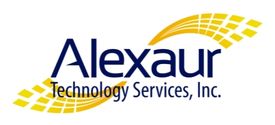 The technology you use in day-to-day operations is one of the first areas in your business to examine. If you are hoping to boost profitability in 2024 without compromising productivity or efficiency, look at this 11-step Road Map.
The technology you use in day-to-day operations is one of the first areas in your business to examine. If you are hoping to boost profitability in 2024 without compromising productivity or efficiency, look at this 11-step Road Map.
We have created a step-by-step road map that you can use to go through your organization to determine if and where you can be saving money and utilizing new or better technology to improve operational efficiency.
1. Technology Inventory:
- Conduct a comprehensive inventory of your current technology resources, including: hardware, software licenses, and peripherals like monitors, printers, keyboards, etc.
- Identify equipment that is outdated or underutilized and consider upgrading or decommissioning it.
2. Software Licensing And Subscriptions:
- Ensure compliance by reviewing all software licenses and subscriptions.
- Identify and eliminate any unused or redundant software to reduce unnecessary expenses.
3. Cloud Services Optimization:
- Review your usage of cloud services and consider resource optimization based on actual needs.
- Evaluate security protocols for cloud-based services to ensure you are not at risk of a data breach. This can be an expensive problem and should not be dismissed or overlooked.
4. Remote Work Infrastructure:
- Improve remote work capabilities to support flexible working arrangements. Inefficiency in this area will decrease productivity, inflate costs, and increase cyber security risks.
- Invest in secure collaboration tools and virtual private network (VPN) solutions for remote access.
5. Data Storage Optimization:
- Assess data storage needs and implement data archiving strategies to free up primary storage. Are you saving documents you do not need? Are there redundant files that should be removed?
- Consider cloud storage options for flexibility and cost-effectiveness.
6. Network Performance:
- Regularly monitor and optimize network performance to ensure faster and more dependable data transfer, reduce downtime, enhance the user experience, and support cost savings, contributing to the overall efficiency and success of your business operations.
7. IT Security Measures:
- Regularly update and patch software to address potential security vulnerabilities.
- Ensure that antivirus, anti-malware, and other security solutions are up-to-date and active.
- Conduct regular security audits and frequent employee training to prevent security breaches.
NOTE: The list of cybersecurity measures barely scratches the surface. If you have not done so already, it needs to be a priority to have a professional dig into your security solutions. Data breaches are expensive and can potentially shut a business down. Click here to book a call with our team.
8. Vendor Management:
- Streamline vendors where possible to simplify management and potentially lower expenses.
9. Employee Training Programs:
- Provide employees with ongoing training programs to enhance their IT skills and awareness.
10. Paperless Initiatives:
- Explore paperless solutions to reduce printing and document storage expenses.
- Implement digital document management systems for greater efficiency and cost savings.
11. Telecommunications Optimization:
- Renegotiate telecom contracts or explore alternative providers to reduce expenses.
- Utilize VoIP (Voice over Internet Protocol) for cost-effective and scalable communication solutions.
By systematically tackling these areas, business owners can improve their IT infrastructure, drive productivity, and achieve cost savings that contribute to overall profitability. Regularly revisiting and updating this checklist will help businesses stay flexible in the ever-changing landscape of technology and business operations.
If you need help implementing the action steps on this list, our team is ready to help. Click here to book a FREE 15-Minute Discovery Call with our team, where we will discuss what your company needs and answer questions you might have.



